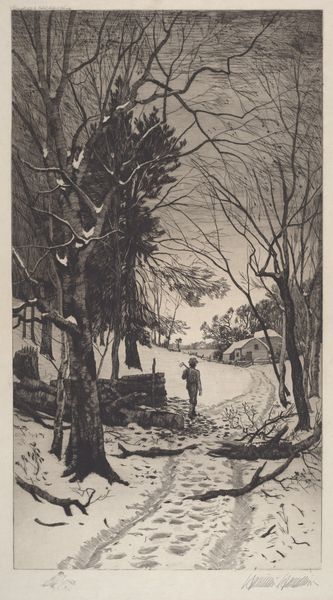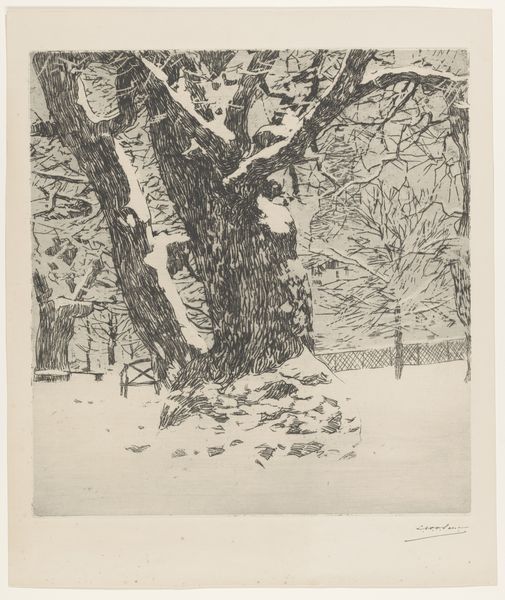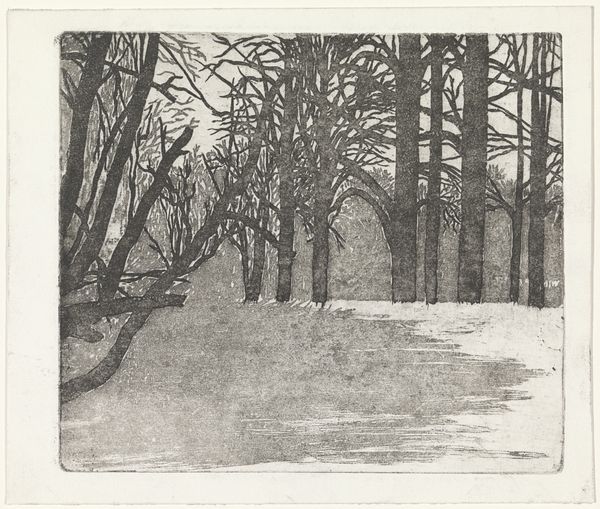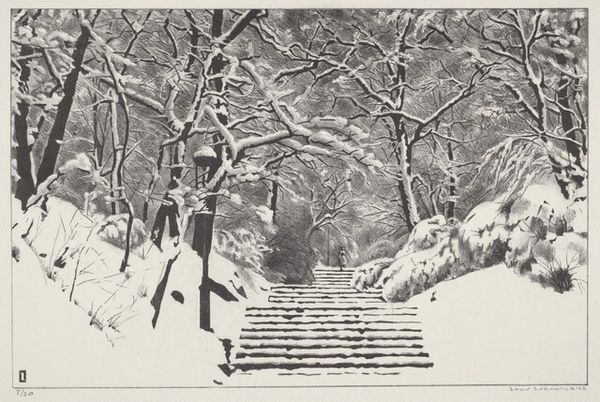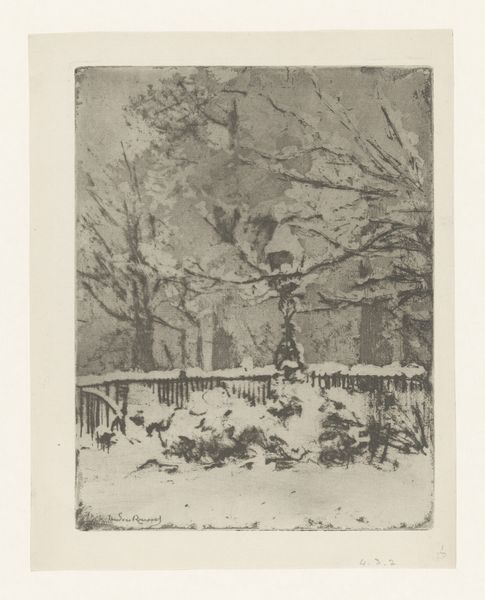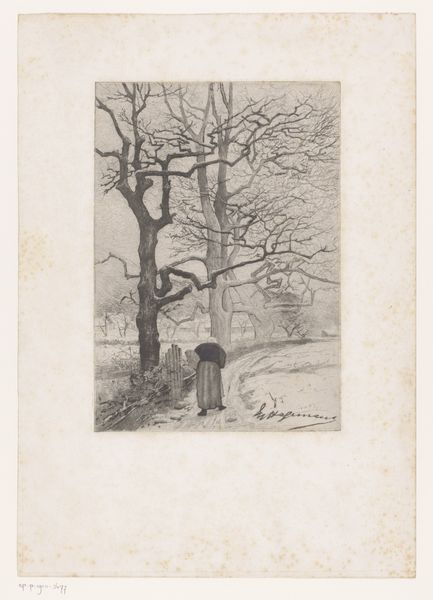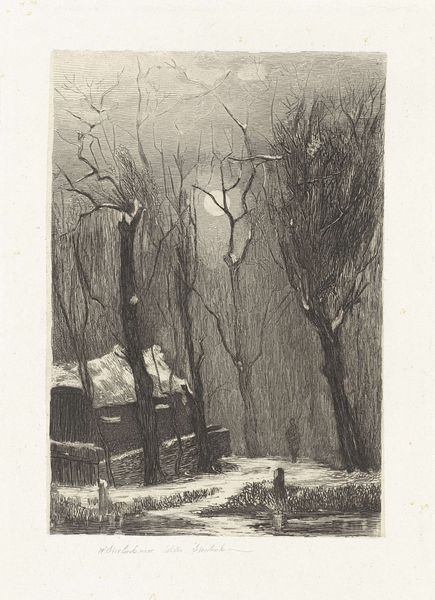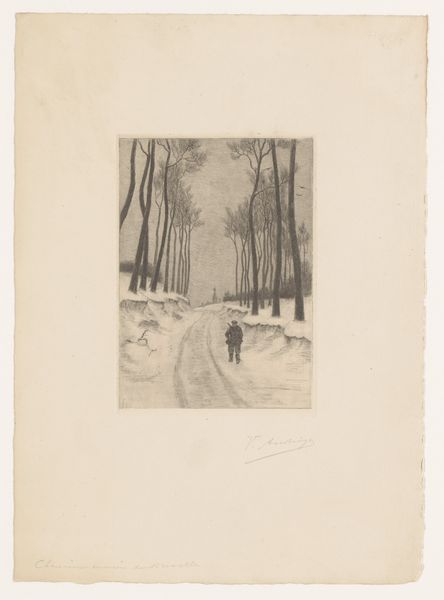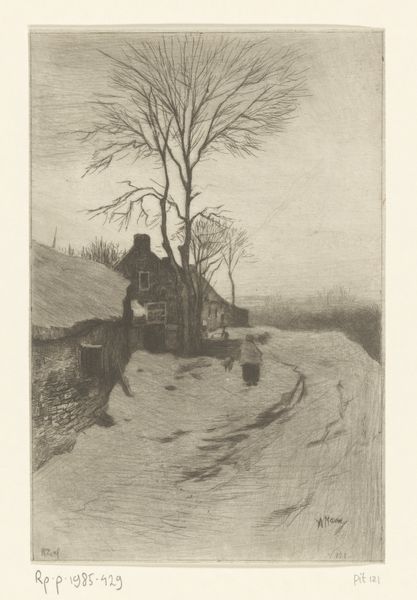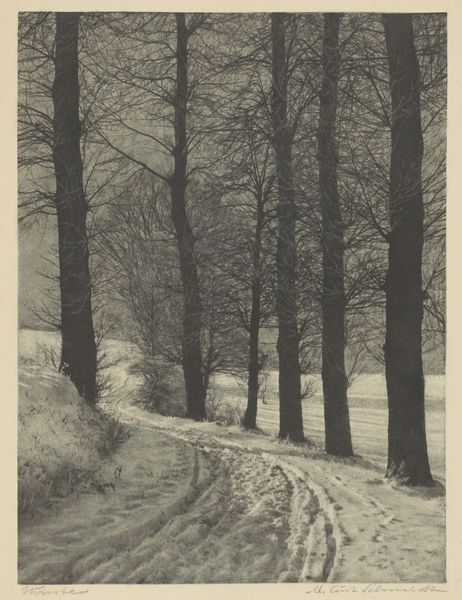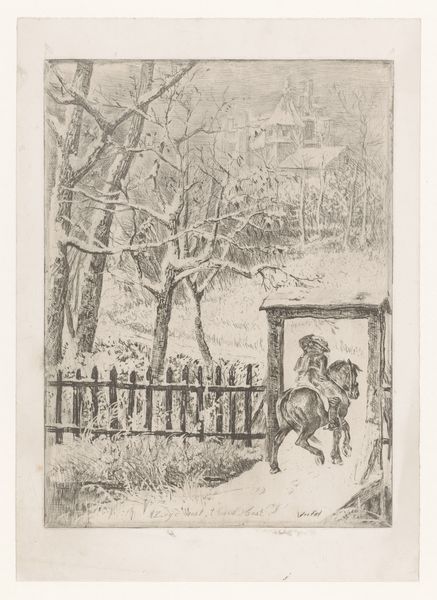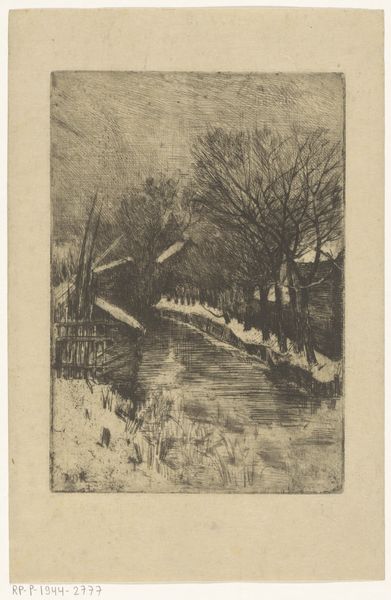
Copyright: Public Domain: Artvee
Editor: This is Carl Moll’s “Winter,” a woodcut from 1903. It feels very still, almost silent, with so much snow blanketing everything. What strikes me most is how much of the image is taken up by the white space, the snow itself. What do you see in this piece? Curator: The starkness you mention is compelling. Notice how Moll uses the white not just as emptiness, but as a powerful symbol. The heavy snow is not just a depiction of weather, it represents a kind of collective memory of winters past. Each snowfall, in art and life, layers itself upon previous experiences, becoming part of our shared cultural understanding. What do you make of the two figures in the distance? Editor: They look very small and isolated against the expanse of white. They seem almost consumed by the landscape. Curator: Exactly. This hints at the power of nature, its capacity to dwarf human concerns. The trees, rendered with a starkness characteristic of woodcuts, almost become skeletal, symbols of death and dormancy but also of resilience. Do you see that resilience reflected anywhere else? Editor: I guess in the path still being visible, still being used, even in the heavy snow. Curator: Precisely. Moll is creating a visual poem here, meditating on time, memory, and our place within the larger cycles of nature. The very choice of a woodcut, an older medium, also seems deliberate. It's as if he’s using the artistic process itself to connect to previous generations who have also tried to capture the essence of winter. It seems he is trying to evoke a specific collective cultural response. Editor: That's fascinating; I never considered how the medium itself contributes to the overall meaning and cultural impact. It adds another layer to that feeling of stillness. Curator: Indeed, a silence resonating through time.
Comments
No comments
Be the first to comment and join the conversation on the ultimate creative platform.
